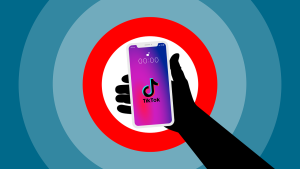
Author: Steven Cernak
Late last month, Department of Justice Assistant Attorney General Gail Slater gave her first major policy address, entitled “The Conservative Roots of America First Antitrust Enforcement.” The thoughtful speech describes an antitrust perspective different from those of any recent Administrations, though consistent with other Trump Administration policies. Antitrust practitioners should prepare for at least subtle changes in the enforcement we have seen recently and for generations.
Location of Speech No Accident
Slater gave the speech at Notre Dame Law School in South Bend, Indiana (technically, Notre Dame IN). While Slater’s Principal Deputy, Roger Alford, taught at Notre Dame, she provided an additional rationale for the location:
We all know the story of the decline in manufacturing in this state. Indiana was at the heart of the United States’ thriving manufacturing industry for much of the 20th century.
But then in the 1960s and ’70s the factories started shutting down. The Studebaker factory closed here in South Bend in 1963, and other Indiana cities experienced similar population declines as manufacturing moved overseas. It took decades for cities such as South Bend to recover, and some have still not recovered. (footnote omitted)
Now, for years I have called for federal antitrust enforcers to get out their Beltway seats. And as a native Midwesterner practicing here for over 35 years, I heartily applaud the choice of Indiana. While I am a Wolverine and not a Golden Domer, my wife is a South Bend native; we were married at St. Joseph parish; and our sons have certainly seen Touchdown Jesus and prayed at the Grotto. So, I especially liked the South Bend choice.
But while I understand the gist of Slater’s point in the quote above, I will quibble enough with the details to push back on the simplistic story that some readers might mistakenly take from it.
Although the 1963 Studebaker plant closure and loss of 7000 jobs certainly was devastating for the company and the city, it was neither the beginning nor the end of problems for either. While Studebaker was “first by far with a post-war car,” the company’s employment had already peaked at 22,000 shortly after World War II and its poor finances forced a merger with Packard in 1954. By 1963, Bendix was actually South Bend’s largest employer and, two years later, the city had “truly come back” from the Studebaker hit as its unemployment rate was one-third of the 1963 rate. Unfortunately, the economic recovery was uneven, leaving behind many minorities, and not destined to last. The city suffered another blow in 1979 when the downtown Sears store closed and moved to University Park Mall in suburban Mishiwaka. So, the Studebaker plant closing was only part of a long-term process.
Any implication that the Studebaker plant closed because “manufacturing moved overseas” probably is about a decade off. In 1963, the percentage of imported cars sold in the US was just over 5%. Instead, Studebaker’s decline after 1950 has been blamed on quality issues, higher costs (especially for labor), and an inability to compete with the lower costs and prices of General Motors, Ford, and Chrysler, especially after the Big 3 started making compact cars in the early 1960’s.
So, did the Big 3 or at least GM abuse its “dominance” or otherwise violate the antitrust laws and kill off Studebaker, Packard, Nash-Kelvinator, and Hudson? Various federal entities certainly investigated several times, including in Congressional hearings in 1955 and 1958. At the latter, George Romney, head of American Motors, the result of the merger of Nash-Kelvinator and Hudson, called for GM, Ford, and the United Auto Workers to be broken up into several smaller competitors and unions.[1] I would argue that the independents failed because of an inability to compete with the Big 3, an ability foreign manufacturers like Toyota, Nissan, and Honda developed a few years later — the share of imports rose to about 15% in 1970 then to over 25% a decade later. (Readers should note that I was an in-house antitrust lawyer at GM from 1989-2012 and learned from many of my predecessors, like Tom Leary.)
Anyone using Slater’s speech to tell a simplistic story of automobile manufacturing and sales should travel about thirty minutes east from South Bend on the toll road and visit Elkhart, IN. Since the end of World War II, about 80% of the recreational vehicles sold in the US each year have been made in and around Elkhart, with most of them produced by a small handful of companies. Why the difference compared to automobiles? Perhaps a uniquely American product sold in volumes too small and erratic to attract foreign competition or mass production techniques? The explanation for Elkhart’s success might be just as complicated as that for South Bend’s troubles.
But while I quibble with Slater’s selection of anecdote, I agree with what I think is her more general argument: The demise of the independent automakers and rise of import automakers did not equally affect consumers, workers, and communities like South Bend (or my Detroit). Slater does acknowledge that “change is inevitable in a dynamic and innovative economy” but also points out, correctly in my view, that “economists call this creative destruction and shrug it off as merely market forces at play.”
Those of us who have praised the free market for the benefits it has brought consumers and society must acknowledge that markets also create winners and losers and often take a long time to adjust. While downtown South Bend is much nicer than it was when I first visited more than forty years ago, it is painful that the main remnant of Studebaker is a museum (although I highly recommend it). Still, I am not yet convinced that these stories show that antitrust law, as compared to other policies, has a large role to play beyond ensuring that the free market really is free.
Three Principles – Some Familiar, Some New to Many Practitioners
Slater described three principles of America First antitrust. I will cover them in the reverse order of their presentation but, perhaps, in decreasing order of familiarity to many practitioners.
First, “Antitrust law enforcement should support deregulation by enabling free market competition that prevents the need for government regulation of consolidated power.” In other words, Slater plans to have “a preference for litigation over regulation,” using the scalpel of litigation “to make targeted, incisive cuts to remove the cancer of collusion and monopoly abuse.” The principle is most clearly demonstrated in the Division’s recently announced task force designed to root out anticompetitive regulations as part of the Administration’s broader deregulation efforts.
This principle seems to be a clear break with the Biden Administration’s efforts at greater regulation, especially through the FTC. Besides the task force’s efforts and more litigation, it could play out in the form of a greater appetite for structural versus behavioral remedies in any problematic mergers. On the other hand, some of the Division’s proposed remedies in the Google search engine market lawsuit, such as forced sharing of data, rules on conduct to prevent self-preferencing, and the required appointment of an officer and a committee to assist in ongoing monitoring, do sound regulatory.
Second, “Antitrust law enforcement should adhere to the rule of law and respect binding precedent and the original meaning of the statutory text.” Slater’s promises to “respect originalism,” maintain a “faithful humility to law’s limits,” and “enforce the laws passed by Congress, not the laws [she wishes] Congress had passed” certainly do sound like a “truly conservative approach to antitrust law.” That conservative approach’s view of precedent and original meaning, however, might not please some businesspeople who call themselves conservative.
Slater believes that new economic theories “do not render older precedent a dead letter” and while “there will be important debates about the weight we should place on older versus newer precedent,” it “is the Supreme Court’s prerogative” to change its interpretations. That attitude can help explain this Administration’s acceptance of the Biden Administration’s Merger Guidelines with its reference to many old cases. Practically, that means that any practitioner must be prepared to explain why old, inconvenient precedent like, for example, Philadelphia National Bank’s structural presumption, should not govern Slater’s merger enforcement with arguments better than a treatise’s assertion that today’s Supreme Court probably would come out differently.
Because the Sherman Act was meant to “codify the [English and American] common law and state antitrust laws,” Slater asserts, terms like “restraint of trade” and “monopolize” “must be understood with respect to the common law that they emerged from.” Many others have spent more time exploring the common law and Sherman Act drafting history than have I; however, my understanding from reviewing works by Werden and Hawk is that the meaning of “monopolize” — and even “monopoly” beyond one established by the government — is unclear or complicated. Still, practitioners might need to bone up on what Senator Sherman, or Senators Hoar and Edmonds, meant back in 1890.
Finally, “Antitrust respects the moral agency of individuals by protecting their individual liberty from the tyranny of monopoly.” Here, we get some principles that might sound odd to antitrust practitioners but provide another good reason the speech was made at Notre Dame.
Continue reading →
 The Antitrust Attorney Blog
The Antitrust Attorney Blog












